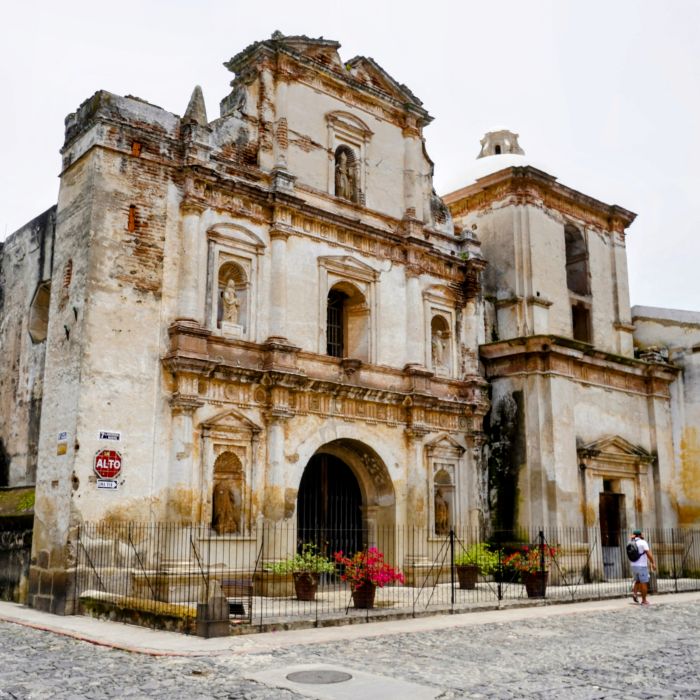Discover the rich history and heritage of Antigua Guatemala at the Museo de San Agustín. Located in the restored ruins of the former Convent of San Agustín, this museum showcases the exhibition “Fragments of the Past,” featuring valuable archaeological pieces and a room dedicated to pre-Hispanic Mayan culture.

The Convent of San Agustín was established as the fifth convent in Santiago, Guatemala, (present day Antigua), following the arrival of Father Francisco de Ibarra from Mexico in 1610. Ibarra’s mission was to petition for the convent’s founding and secure the necessary licenses. After overcoming initial obstacles, Ibarra successfully procured a substantial donation of 12,000 pesos from Don Manuel de Esteves in 1611, and all necessary licenses, facilitating the convent’s foundation.
Notably, the term “Convent of San Agustín” specifically refers to the residential quarters for the friars who remained in Santiago to establish the Augustinian order’s presence. This distinction is crucial, as the physical structure visible today does not correspond to the original convent. Instead, it only refers to the dwelling place for Friar Gaspar Suárez and his companion, Friar Francisco Zúñiga, who remained in Santiago to establish the Order’s house after Ibarra’s return to Mexico.
In fact, in 1615, the Augustinian friars’ residence was relocated due to the unfavorable conditions and inconvenient location of their initial dwelling. Under the supervision of Father Friar Antonio de Alderete, who served as Prior, the friars occupied the houses previously inhabited by the Nuns of Santa Catarina Mártir. During his tenure, Alderete implemented significant expansions to the Order, notably increasing its membership and administrative offices, as well as augmenting its endowment by 8,500 pesos. The Augustinian friars remained at this location until 1625.
The above information is sourced from the book, ‘Compendio de la Historia de la Cuidad de Guatemala’, published in 1630, by Brother Don Domingo Juarros. For the sake of accuracy, and finding no further credible information from the period from 1625 to 1657, the following information, from 1657 to present day, will be sourced from the book, ‘Antigua Guatemala, The city and its heritage’, written by Elizabeth Bell.
The initial Church and Convent of San Agustín, situated on the site currently occupied by the ruins in Antigua, was constructed in 1657. This original structure encompassed the entire eastern portion of the block, with its grounds extending as far as the Alameda de Santa Lucía. However, the building suffered significant damage during the 1717 earthquake, and its reconstruction was protracted due to financial constraints. The rebuilt edifice, inaugurated in 1761, was again severely damaged in 1773. This calamity prompted the Augustinians to relocate from Santiago to the new capital of Guatemala, making them the first religious order to do so.
The Church of San Agustín suffered greatly from prolonged neglect, which, combined with subsequent seismic events, resulted in the loss of a significant portion of its structure. Notable incidents include the collapse of the dome in 1917 and the upper choir in 1976. In the decades that followed, some efforts were made to clear the debris. However, it was only in recent years that the site underwent restoration, and the ruins of San Agustín have been reopened to the public, now housing a museum that showcases the history and significance of the site.
References:
“Antigua Guatemala, The city and its heritage” by Elizabeth Bell, pages 94-97
“Compendio de la Historia de la Cuidad de Guatemala” by Domingo Juarros, pages 168-169
Please note that many of the entrance fees for landmarks, parks, and museums are subsidized by the government for Guatemalan citizens. You may notice a price difference for foreigners.